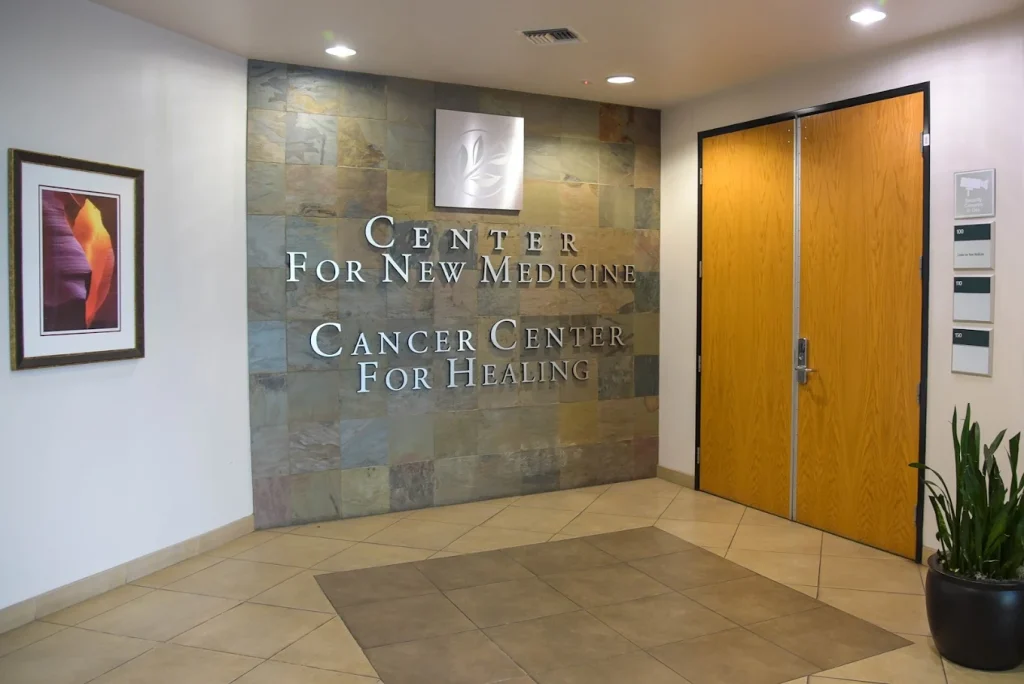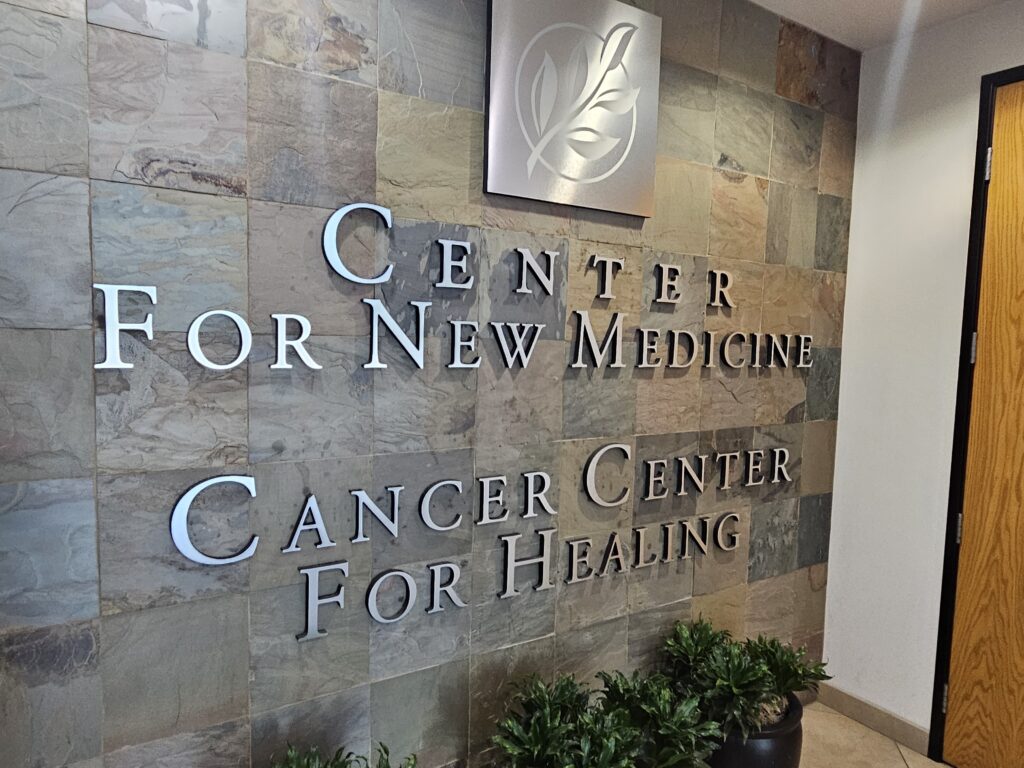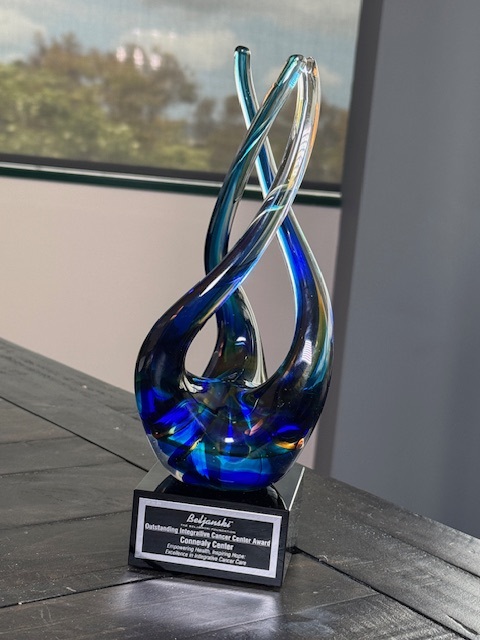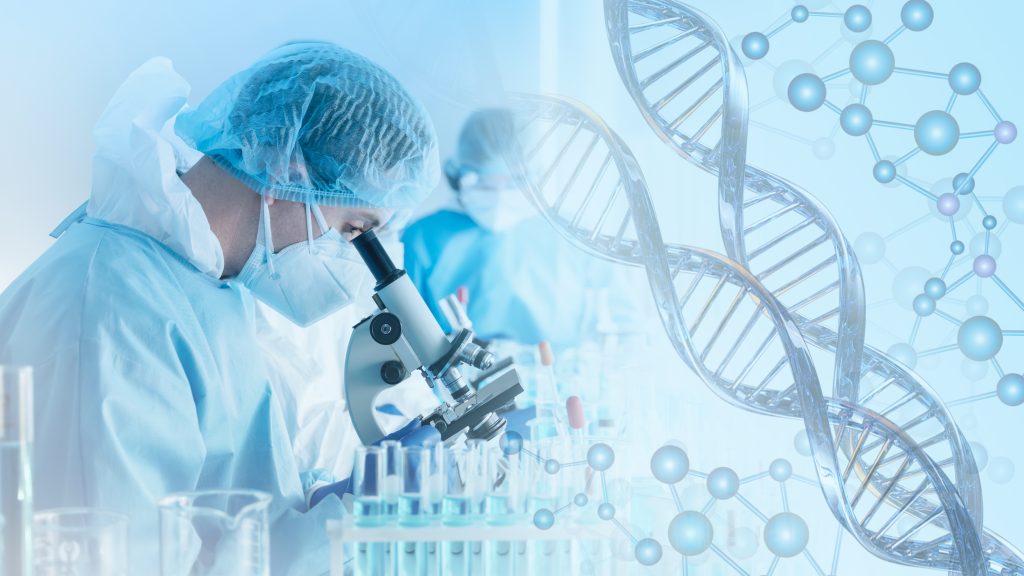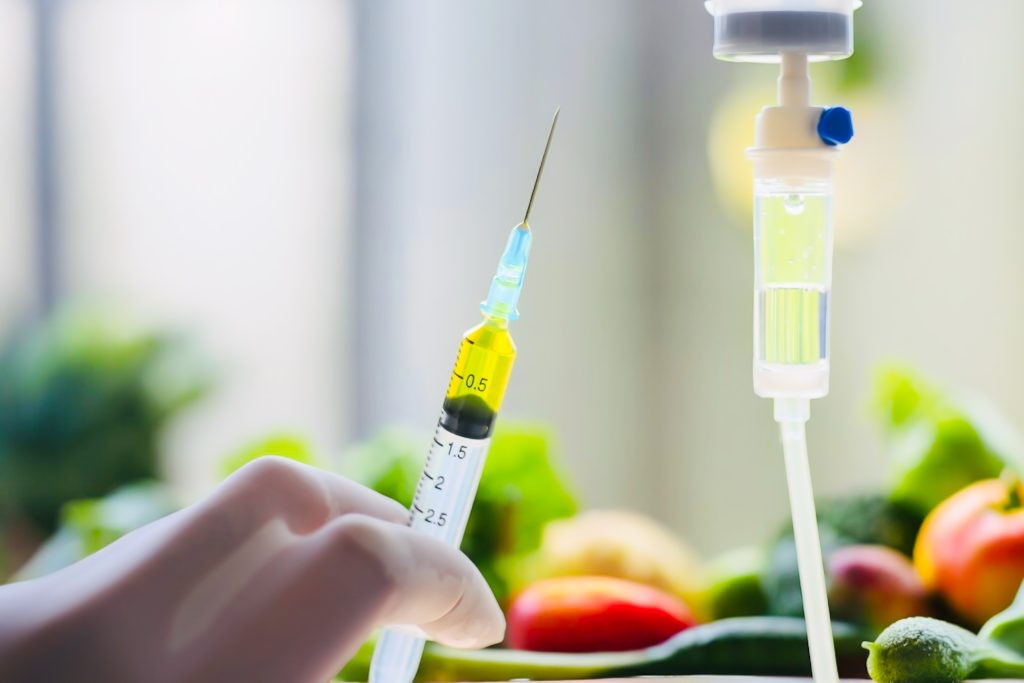When it comes to cancer, skin rashes may not be the first symptom that comes to mind. However, skin rash can be a sign of lymphoma, a cancer that affects the cells of the immune system. In this article, we will explore skin rash with lymphoma, discussing the symptoms, diagnosis process, and available treatment options.
Key Takeaways:
- Skin rash can be a sign of lymphoma, a type of cancer that affects the immune system.
- Lymphoma has different types, including non-Hodgkin lymphoma and Hodgkin lymphoma.
- Skin rash as a symptom of lymphoma can have various causes and may be accompanied by other symptoms.
- A comprehensive diagnostic process is necessary to confirm a lymphoma diagnosis, which may include various tests and procedures.
- Treatment options for lymphoma patients with skin rash include traditional therapies and holistic approaches that focus on comprehensive cancer care.
- The Cancer Center for Healing in Irvine, CA, offers holistic treatment modalities for cancer patients, led by expert Dr. Leigh Erin Connealy.
- Taxol is a common medication used in chemotherapy for lymphoma, but it also has potential side effects that need management.
- Comprehensive cancer care that takes into account the physical, emotional, and spiritual needs of the patient is essential in managing lymphoma.
Understanding Lymphoma and its Types
Lymphoma is a cancer that affects the lymphatic system, which is responsible for fighting infections and diseases in the body. It occurs when lymphocytes, a type of white blood cell, grow and multiply uncontrollably. There are two main types of lymphoma: Hodgkin lymphoma and non-Hodgkin lymphoma.
Hodgkin lymphoma, also known as Hodgkin’s disease, is a less common type of lymphoma that is characterized by the presence of Reed-Sternberg cells in the affected tissue. Non-Hodgkin lymphoma, on the other hand, is a more common type of lymphoma that can develop from B or T lymphocytes.
Skin rash is a known symptom of lymphoma, and it can present in both Hodgkin and non-Hodgkin lymphoma cases. However, skin rash is not always present in lymphoma patients, and its absence does not rule out the possibility of lymphoma. It is important to recognize skin rash as a potential symptom and seek medical attention if one appears.
Skin Rash as a Symptom of Lymphoma
One of the lesser-known symptoms of lymphoma is the appearance of a skin rash. While it may seem like an innocuous symptom, it can be a sign of an underlying medical condition, including lymphoma.
What causes a skin rash in lymphoma patients? In some cases, the immune system’s response to the cancer cells can cause skin changes. Additionally, lymphoma cells can infiltrate the skin, leading to a rash. This type of rash can appear anywhere on the body but most commonly occurs in areas with enlarged lymph nodes.
If you have a skin rash that does not improve or goes away following typical treatments, it is essential to consult a doctor. While a rash alone is not a definitive diagnosis of lymphoma, it can be an alarming sign. In many cases, a skin biopsy is needed to determine the underlying cause of the rash.
Other Symptoms of Lymphoma
In addition to skin rash, lymphoma can present with a variety of symptoms and signs that individuals should be aware of. Some common symptoms of lymphoma include:
- Swollen lymph nodes, particularly in the neck, armpits, or groin
- Fever and chills
- Unexplained weight loss
- Fatigue and weakness
- Night sweats
- Loss of appetite
- Shortness of breath
- Coughing or chest pain
It is important to note that these symptoms may also be present in other medical conditions, making it essential to consult with a doctor for proper diagnosis.
“It is crucial to pay attention to any changes in your body and seek medical attention if you notice any persistent symptoms.”
Diagnosing Lymphoma and Skin Rash
Diagnosing lymphoma can be a complex process that requires various tests and examinations. Skin rash, while a symptom of lymphoma, is not always present in patients. Therefore, doctors typically employ multiple diagnostic methods to confirm lymphoma with or without skin rash.
A physical exam is usually the first step in the diagnostic process. The healthcare provider will check for swollen lymph nodes in the neck, armpits, and groin, and examine the skin for rashes or bumps. Based on the findings, the doctor may recommend further testing, including blood tests, imaging studies, and biopsies.
Imaging tests, such as X-rays, CT scans, and PET scans, can help doctors visualize abnormalities in the lymph nodes or other organs. Biopsies involve taking a tissue sample from a suspicious area and examining it under a microscope to check for cancerous cells.
If skin rash is present, a dermatologist may perform a skin biopsy to confirm lymphoma involvement. This involves cutting a small piece of skin from the rash and examining it under a microscope. The biopsy can help determine the type of lymphoma and guide treatment decisions.
Treatment Options for Lymphoma with Skin Rash
When it comes to treating lymphoma with skin rash, there are several options available. The recommended treatment will depend on the type and stage of the lymphoma, as well as the overall health of the patient.
One common treatment option is chemotherapy, which uses medications to kill cancer cells. In cases of lymphoma with skin rash, the medication may be delivered topically or orally. Radiation therapy is another option that uses high-energy radiation to destroy cancer cells.
Immunotherapy is a newer treatment option that helps the immune system fight cancer. This type of therapy can be used alone or in combination with chemotherapy or radiation. Targeted therapy is also available and uses medications that target specific proteins or molecules that are involved in cancer growth.
Complementary and alternative therapies can also be helpful in managing symptoms and improving overall well-being. These may include acupuncture, massage therapy, and meditation. It is important to discuss these options with a healthcare professional to ensure they are safe and effective.
Comprehensive Cancer Care at the Cancer Center for Healing
The Cancer Center for Healing in Irvine, CA offers a comprehensive approach to cancer care that incorporates both traditional and holistic treatments. Led by Dr. Leigh Erin Connealy, the center provides personalized care to address all aspects of a patient’s health.
In addition to traditional treatments like chemotherapy and radiation, the Cancer Center for Healing offers a range of holistic therapies. These may include nutritional counseling, detoxification programs, and mind-body therapies like yoga and meditation. The center also utilizes cutting-edge technologies like hyperthermia therapy and photodynamic therapy to target cancer cells.
By taking a comprehensive approach, the Cancer Center for Healing aims to not only treat cancer but to also support overall health and well-being.
Comprehensive Cancer Care at the Cancer Center for Healing
The Cancer Center for Healing is a leading medical facility that provides holistic cancer care to individuals suffering from lymphoma and other types of cancer. Led by Dr. Leigh Erin Connealy, the center offers comprehensive cancer treatment that takes into consideration the physical, emotional, and spiritual needs of each patient.
At the Cancer Center for Healing, patients have access to a range of integrative cancer therapies, including alternative therapies and lifestyle interventions. The center’s approach is centered on the idea that healing comes from treating the whole person, not just the disease.
Holistic Treatment Modalities at the Cancer Center for Healing
The Cancer Center for Healing offers a wide range of holistic treatment modalities for lymphoma patients experiencing skin rash and other symptoms. Their approach to cancer care is comprehensive, taking into account the whole person and all aspects of their health.
Alternative therapies, such as acupuncture, massage, and nutritional therapy, are available to help manage symptoms and improve quality of life. They also offer integrative cancer therapies, such as immunotherapy, that work to strengthen the body’s natural defenses against cancer.
Additionally, lifestyle interventions, such as exercise and stress reduction techniques, are incorporated into the comprehensive cancer treatment plans. These interventions help strengthen the body’s natural defenses and improve overall well-being.
Managing Side Effects of Lymphoma Treatment
While undergoing treatment for lymphoma, patients may experience a range of side effects, including fatigue, nausea, hair loss, and decreased appetite. These side effects can be challenging to manage, affecting the patient’s mood and overall quality of life. However, there are strategies that can help mitigate the impact of these side effects and improve the patient’s well-being during treatment.
Effective Strategies for Managing Side Effects
One of the most effective ways to manage side effects is to communicate openly with the healthcare team. The medical staff can offer guidance and support with managing side effects and may prescribe medications to help mitigate symptoms. Additionally, patients can take steps to care for themselves, such as eating a balanced diet, staying hydrated, and engaging in light exercise.
For patients undergoing chemotherapy, it may be helpful to plan ahead for periods of fatigue. Scheduling rest time and naps throughout the day can help prevent exhaustion and improve energy levels. Additionally, wearing comfortable clothing and reducing exposure to loud noises and bright lights can help reduce stress and promote relaxation.
Taxol and its Side Effects
Taxol is a medication commonly used in chemotherapy for lymphoma patients. While it can be effective in treating cancer, taxol can also cause a range of side effects, including hair loss, nausea, and decreased appetite. Patients may also experience more serious side effects, such as kidney and liver damage. It is important to discuss potential side effects with the healthcare team to determine the best course of action.
Patients undergoing taxol treatment may need to undergo blood tests on a regular basis to monitor for potential side effects. Additionally, it is essential to take medications as prescribed and report any unusual side effects or adverse reactions immediately to the healthcare team.
Working with the Cancer Center for Healing
The Cancer Center for Healing, led by Dr. Leigh Erin Connealy, offers a comprehensive approach to cancer care that includes a range of holistic treatment modalities. Patients can work with a team of experts to manage side effects and promote overall healing during lymphoma treatment.
By combining traditional medical treatments with alternative therapies and lifestyle interventions, patients can receive comprehensive cancer care that takes a whole-person approach to treatment. If you are interested in learning more about the Cancer Center for Healing or scheduling a consultation, please contact the center directly.
Understanding Taxol as a Chemotherapy Medication
Taxol is a chemotherapy medication commonly used in the treatment of lymphoma. It is an antineoplastic agent that works by inhibiting the growth of cancer cells. Taxol is often used in combination with other chemotherapy drugs to increase its effectiveness, especially in patients with aggressive lymphoma.
However, like most chemotherapy drugs, Taxol can cause a range of side effects that vary in severity and frequency from one patient to another. Some of the most common side effects of Taxol include hair loss, nausea, vomiting, fatigue, and anemia. These side effects usually go away after the completion of treatment, but some patients may experience long-lasting effects.
| Common Taxol Side Effects: | Less Common Taxol Side Effects: |
|---|---|
|
|
It is important for patients to be aware of the potential side effects of Taxol and to communicate any discomfort or adverse reaction to their healthcare provider. Proper management of side effects can greatly improve a patient’s quality of life during treatment.
If you are considering Taxol as a part of your lymphoma treatment, it is essential to understand the medication’s function, risks, and possible side effects. Consulting with an experienced healthcare professional, such as those at the Cancer Center for Healing, can provide you with the education and support you need to make informed decisions about your cancer care.
Seeking Consultation at the Cancer Center for Healing
If you or a loved one has been diagnosed with lymphoma or is experiencing a skin rash, seeking expert guidance is paramount. The Cancer Center for Healing located in Irvine, CA, offers comprehensive cancer care with a focus on holistic treatment modalities.
Dr. Leigh Erin Connealy leads the center, and her team of experienced professionals provides individualized treatment plans tailored to each patient’s unique needs. The Cancer Center for Healing offers a range of integrative cancer therapies, including alternative therapies and lifestyle interventions, to help manage the disease holistically.
If you are interested in learning more about the Cancer Center for Healing’s services or scheduling a consultation, please contact their office by phone or email. Don’t wait to get the expert guidance and comprehensive care you deserve during this challenging time.
Finding Hope in Holistic Cancer Care
Dealing with lymphoma, especially when accompanied by skin rash, can be a daunting experience. However, it is important to remember that there is hope, and there are resources available to help.
At the Cancer Center for Healing in Irvine, CA, Dr. Leigh Erin Connealy and her team of experts offer a comprehensive approach to cancer care. Their focus on holistic treatment modalities and lifestyle interventions sets them apart from traditional cancer centers.
Holistic cancer care involves treating the whole person, not just the disease. This approach seeks to address the physical, emotional, and spiritual aspects of cancer management. At the Cancer Center for Healing, patients can expect to receive integrative cancer therapies such as acupuncture, massage therapy, and nutritional counseling.
Additionally, the center offers alternative therapies such as ozone therapy, hyperbaric oxygen therapy, and IV vitamin C therapy. These treatments are designed to complement traditional cancer treatments and enhance the body’s ability to fight cancer.
Managing the side effects of lymphoma treatment can also be a significant challenge. However, at the Cancer Center for Healing, patients have access to resources and support for managing these side effects effectively.
If you or a loved one is dealing with lymphoma and skin rash, consider seeking a consultation at the Cancer Center for Healing. Their comprehensive approach to cancer care, combined with their focus on holistic treatment modalities, can offer hope and support during this difficult time.
Conclusion
In conclusion, recognizing skin rash as a potential symptom of lymphoma is crucial in detecting the disease early. It is important to keep in mind that lymphoma can present itself in various ways, beyond skin rash alone. Consulting with a medical professional and seeking comprehensive cancer care is recommended in managing the disease.
The Cancer Center for Healing located in Irvine, CA, offers holistic treatment modalities and a comprehensive approach to cancer care. Under the leadership of Dr. Leigh Erin Connealy, the center provides hope to individuals seeking an alternative to traditional cancer treatments. By understanding the potential side effects of lymphoma treatment, such as taxol, patients can manage them effectively with the help of medical professionals. If you or someone you know is experiencing symptoms of lymphoma, reaching out to the Cancer Center for Healing for a consultation may provide the guidance necessary to begin a path towards comprehensive cancer management.
FAQ
Q: What are the symptoms of skin rash with lymphoma?
A: Common symptoms of skin rash with lymphoma include red, itchy, and swollen patches on the skin. Other symptoms may include fatigue, weight loss, and swollen lymph nodes.
Q: How is lymphoma diagnosed?
A: Lymphoma is typically diagnosed through a combination of physical examinations, blood tests, imaging tests (such as CT scans or PET scans), and a biopsy of the affected lymph node or organ.
Q: What are the treatment options for lymphoma with skin rash?
A: Treatment options for lymphoma with skin rash may include chemotherapy, radiation therapy, targeted therapy, immunotherapy, or a combination of these approaches. The specific treatment plan will depend on the individual’s type and stage of lymphoma.
Q: What other symptoms should I look out for besides skin rash?
A: In addition to skin rash, other common symptoms of lymphoma may include night sweats, unexplained fever, persistent fatigue, unexplained weight loss, and swollen lymph nodes.
Q: How can the side effects of lymphoma treatment be managed?
A: The management of side effects from lymphoma treatment may involve medication, lifestyle modifications, and supportive care. It is important to communicate any side effects with the healthcare team to ensure appropriate management.
Q: What is taxol and what are its side effects?
A: Taxol is a chemotherapy medication used in the treatment of lymphoma. Its side effects may include hair loss, nausea, vomiting, fatigue, neuropathy, and bone marrow suppression.
Q: How can I schedule a consultation at the Cancer Center for Healing?
A: To schedule a consultation at the Cancer Center for Healing in Irvine, CA, please contact our office at [contact information]. Our team will be happy to assist you.
Q: What is holistic cancer care and how can it benefit me?
A: Holistic cancer care takes a comprehensive approach to treatment, addressing not only the physical aspects of the disease but also the emotional, mental, and spiritual well-being of the patient. It can provide personalized care and support throughout the cancer journey.


